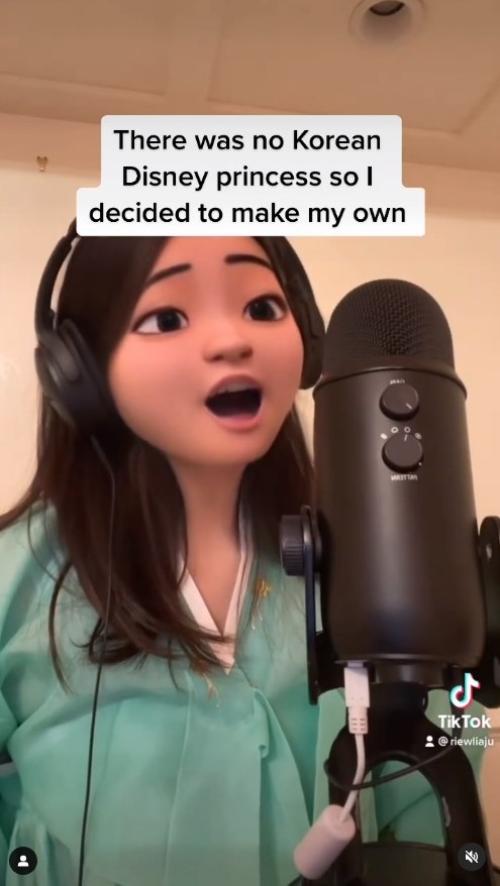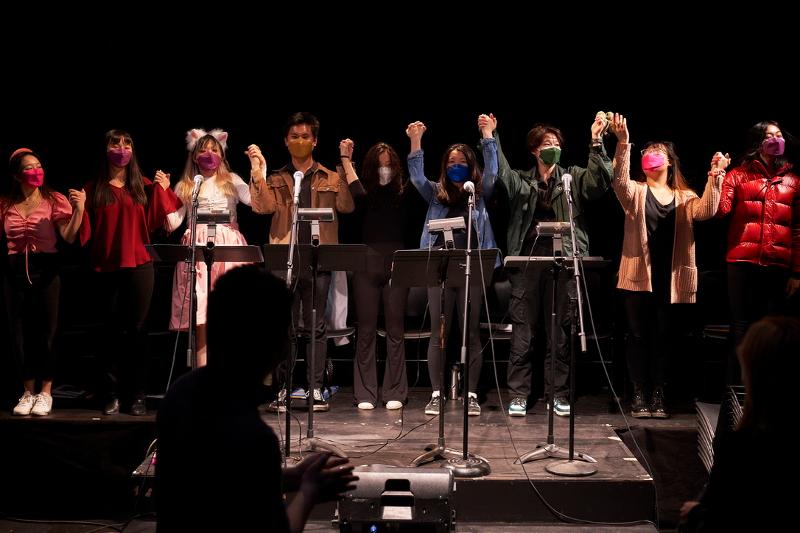By Yoon Hee Young
Video = Lee Jun Young and Kim Sunjoo
This is the story of Julia Riew, a third-generation Korean American and senior at Harvard University who wrote the musical "Simcheong: A Folktale," (spelled Shimcheong by Riew), which has gone viral on social media such as TikTok and Instagram.
In an exclusive video interview with Korea.net on March 22, Riew said she decided to make the musical to give Asians a voice, adding, "Music and theater have always been a big part of my life. When I was a kid, I learned to play the violin and I sang in children's choir."
"Nevertheless, I was afraid to jump into theater since it's hard to find a theatrical piece that centered around an Asian narrative. But then, I've come to think, 'Maybe that's something that I can change.' That's the time I changed my major to music and theater after quitting the pre-med program that I had studied for two years."

This scene is from "Dive," the main theme of Julia Riew's musical "Simcheong: A Folktale." (Julia Riew's Instagram)
"The Story of Simcheong" is a Korean novel written during the Joseon Dynasty (1392-1910). Based on a traditional folktale, the story is of the filial daughter Simcheong, who throws herself into the sea to offer 300 seok (bags) of rice (equal to 43,200 kg) to a temple so that her blind father can regain his sight.
The main theme "Dive" dramatically depicts the scene in which Simcheong dives into the sea for her father. In a 41-second video, Riew wears a blue Hanbok and transforms into a Disney-style animated character using a filter, and sings, "Now all of the fish in the sea can't stop me, all of the waves in the world can't rock me. I'm on a mission and, gee, just watch me go! Dive, all that's left is the dive…"
The clip has garnered more than a million views on TikTok and her account reached 10,000 followers in one day. Viewers praised her work with comments like "Disney needs to make this musical into a movie immediately," followed by a flow of tags of Disney's social media account.
Graduating in May, Riew said the musical is her senior thesis and that she put on public performances of the work this semester.

Julia Riew (sixth from left) on Feb. 26 greets the audience after the performance of her musical "Simcheong: A Folktale" at Harvard University in Cambridge, Massachusetts. (Julia Riew)
Riew said the character reflects elements of herself. Born and raised in the U.S. by a second-generation Korean American father who immigrated to America with his family at age 6, she said Simcheong's journey to return home is similar to her process of finding her identity as a Korean American.
"I've realized that there is no one way to be Korean or American nor the 'answer' to be part of a society. I am me whether I'm in Korea or the U.S. Simcheong also learns that in the musical that she can still be herself whether she's on the land with her father or in the Dragon Kingdom beneath the water," Riew said.
"You can find Korean elements not only in the character and the story but also in the music," she added. An array of Korean music was used in the work like pansori (solo lyrical opera), trot and ballads to describe characters and their feelings.
"I always try not to lose my Korean identity by having a conversation about Korean culture with my family. Korea is the place of my ancestors, my root and what made me today."
"I really hope that someday, we can see a Korean Disney princess in the theater," she said. Riew concluded the interview by saying her career goal is to work as a composer at a leading animation film company or on Broadway.
hyyoon@korea.kr